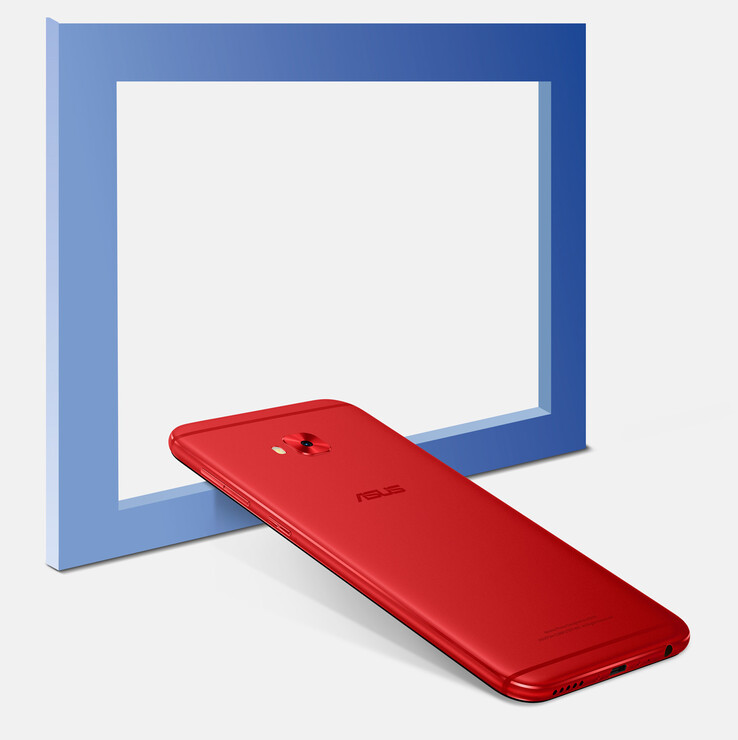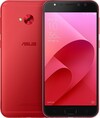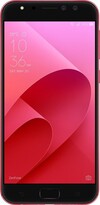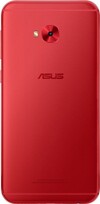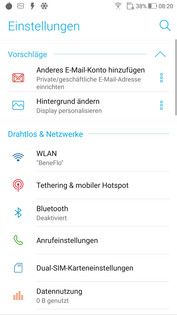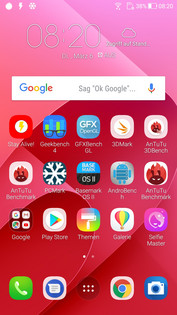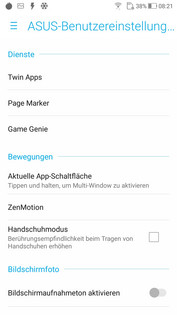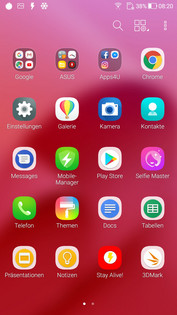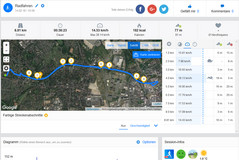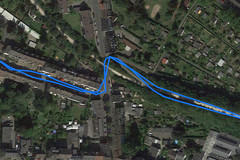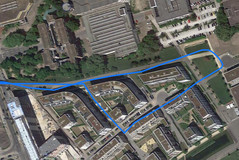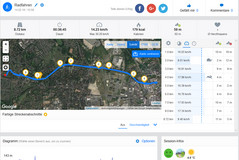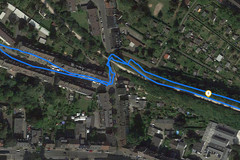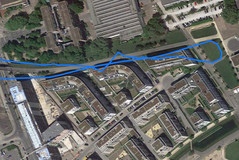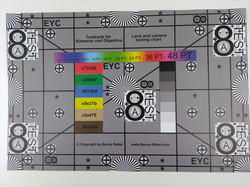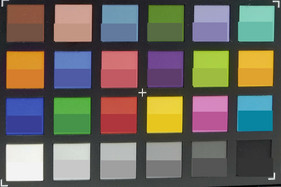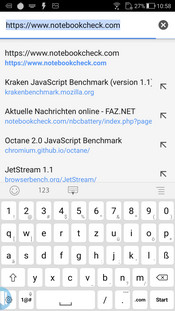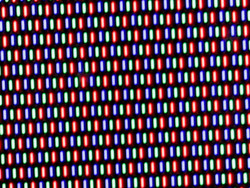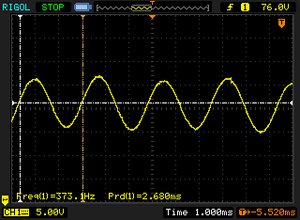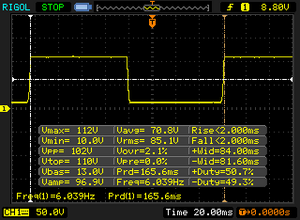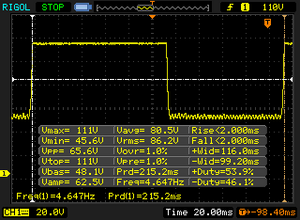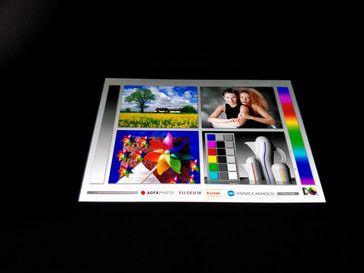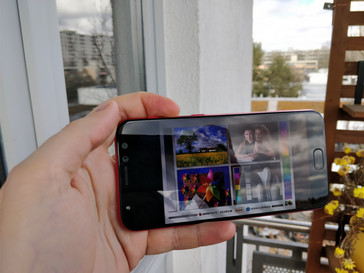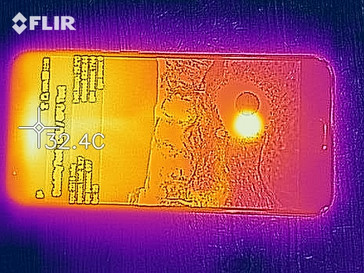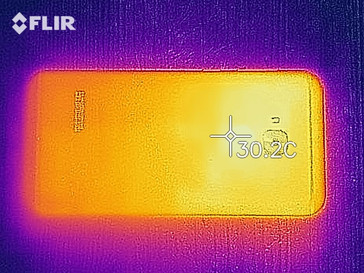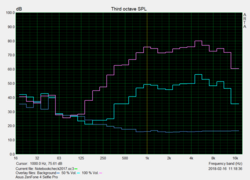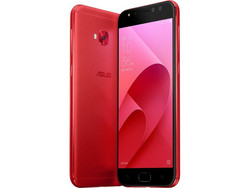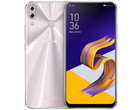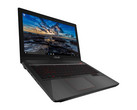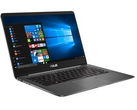ASUS ZenFone 4 Selfie Pro ZD552KL Smartphone Review

Although the release of the ZenFone 5 marked ASUS’ move onto the next generation of their smartphone series, we still have some last generation models in our test lab. One of these is the ZenFone 4 Selfie Pro, a mid-range smartphone that still stands out with its dual front-facing camera and its fire-red finish. While ASUS has already released the ZenFone 4 Selfie and the ZenFone 4 Selfie Lite, the ZenFone 4 Selfie Pro is only officially available in Central Europe.
There are many similarly priced and sized competitors. There is the Wiko WIM, which has fallen significantly in price but which has hardware that is already somewhat outdated. There is the Samsung Galaxy A8 that is, as is often the case with Samsung, a solid mid-range device that is more understated than it is about having flashy features. The ZenFone 4 Selfie Pro faces stiff competition from the Nokia 8 and the Honor 9 too, both of which are equipped with high-end SoCs. We will be using all these smartphones as comparison devices in our tests.
Case – stable metal
The ZenFone 4 Selfie Pro is equipped with a 5.5-inch display with a 16:9 aspect ratio. The display has relatively large top and bottom bezels, the latter of which houses the fingerprint scanner and navigation buttons. The case is 6.9 mm thick, with ASUS managing to keep the rear camera protrusion to a minimum on such a thin case. The device feels good in the hand though thanks to its rounded corners.
The case is made from metal with a matte finish on the rear. There are three colors available: black, red, and a combination of gold and white. The case feels high quality and stable. We found it difficult to flex the device, hearing only quiet creaking sounds when we managed to minimally flex it. We also could not affect the device by applying pressure to the front or rear either.
Connectivity – decent storage, no NFC
The ZenFone 4 Selfie Pro has 4 GB RAM and 64 GB of internal storage, the combination of which makes it comparable to similarly priced smartphones. The device supports microSD card expansion or dual-SIM card slots. The second SIM-card slot doubles as a microSD-card slot, meaning that you have to choose either the functionality of microSD card expansion and a single nano-SIM card or dual-SIM card functionality. The microSD can only be formatted as external storage, so apps can only be stored on the internal storage. FM radio is supported, with the device using the headphone cable as an antenna.
The ZenFone 4 Selfie Pro is not equipped with NFC, while charging and data transfer is handled by a micro-USB 2.0 port.
Software - many apps
The device ships with Android Nougat 7.1.1 and has security patches dated December 2017. While Android Oreo should be rolled out, this was unavailable at the time of testing. Hopefully, a system update coincides with updated security patches too as they were somewhat dated by the time of our tests.
ASUS uses its ZenUI on the ZenFone 4 Selfie Pro, making minor visual changes from stock Android, and the company preinstalls some additional apps. There is a theme gallery, which allows for further UI modifications. Additionally, ASUS has installed a Mobile Manager app, in which cached data and notifications can be blocked for each app and one which supports a security scan feature too. Facebook’s suite of apps is preinstalled, but these can be uninstalled.
Communication and GPS – feeble Wi-Fi, weak GPS
The ZenFone 4 Selfie Pro supports 802.11 b/g/n Wi-Fi, meaning that the device is unable to connect to 5 GHz Wi-Fi networks nor can it take advantage of fast ac Wi-Fi. Our test device performed poorly in our standardized Wi-Fi test. The ZenFone 4 Selfie Pro can only achieve between one-fifth and one-seventh of the speeds attained by the Wiko WIM or the Galaxy A8. Even with the device close to the router and with full signal, web pages load subjectively slower than on our comparison devices. This difference in Wi-Fi speed was exacerbated when we tested the ZenFone 4 Selfie Pro 10 meters and three walls away from the router.
There is only support for seven LTE bands, a choice by ASUS which limits the ZenFone 4 Selfie Pro to just a few countries. While these bands are suitable for using the device in Central Europe, you may struggle to find signal further afield. Worse still, the download and upload speeds on the bands that are supported are not especially fast. We measured a maximum 150 Mbit/s download speed and a 50 Mbit/s upload speed. By contrast, the Honor 9 offers twice the maximum download speed than our test device. It is worth noting that the Chinese variant of the ZenFone 4 Selfie Pro has faster data speeds, while Westerners must settle for LTE Cat. 4.
| Networking | |
| iperf3 transmit AX12 | |
| Wiko WIM | |
| Samsung Galaxy A8 2018 | |
| Nokia 8 | |
| Honor 9 | |
| Asus ZenFone 4 Selfie Pro ZD552KL | |
| iperf3 receive AX12 | |
| Wiko WIM | |
| Honor 9 | |
| Samsung Galaxy A8 2018 | |
| Nokia 8 | |
| Asus ZenFone 4 Selfie Pro ZD552KL | |
The ZenFone 4 Selfie Pro cannot find a location indoors even when next to a window. Outdoors we found that it takes a long time for the GPS to find a location, and then only to an accuracy of 20 meters when it does.
We took the ZenFone 4 Selfie Pro on a bike ride to measure its GPS accuracy against a Garmin Edge 500, which is a professional GPS-based cycling computer. By contrast to our earlier test, the ZenFone 4 Selfie Pro handled the bike ride well, accurately placing us on our route with only minor deviations from the Edge 500. So, while the GPS takes time to be ready to use, we would recommend it as a navigation device when it has found your location.
Telephone and Call Quality – decent sound
ASUS has changed the stock phone app, as call history is opened with the keypad. There are tabs for contacts and settings, of which there are a lot. There are even customization options, with ASUS having included a dark theme, different fonts, and the option to select a background image.
The call quality is good. Overall, voices sound clean and are clear, albeit with no depth to the sound. We noticed that voices became shrill at high volumes. Voices were intelligible over loudspeaker too, although there was some reverberance.
Cameras – good performance, especially from those on the front
ASUS is clear on the selling point of this device, having given it the name Selfie Pro, and reinforcing this by printing “We Love Photo” on the box. To live up to its name, the ZenFone 4 Selfie Pro is equipped with dual 12 MP sensors, one with normal focal length and the other that has a 120 ° wide-angle lens. What’s more, the software can stitch together the images taken with both sensors to create effectively a 24 MP image. This results in beautiful-looking photographs that are detailed and well lit. The main front-facing camera takes good shots, while the quality of the telephoto lens is subjective. There is a strong fisheye effect with clear distortion at the edges of the image. This produces funny group selfies, with those at the edge of the shot looking more like they would in a funhouse distorting mirror.
The main camera has a 16 MP sensor that takes relatively good photographs. These lack the brightness, detail, and sharpness of high-quality lenses, such as those in the OnePlus 5T.
4K videos can be taken with both the front-facing and rear cameras, but only up to 30 FPS. While the quality is passable, colors look a bit pale and there is visible motion blur.
We then tested the camera quality in our lab, testing color reproduction under controlled lighting conditions. Text is rendered well against a colored background, while general sharpness is good too. We noticed some slight artefacts at the edges of the image with larger areas of color appearing pixelated and slightly unclean.
Accessories and Warranty – the usual
ASUS includes the typical accessories in the box: a pair of headphones, a modular power supply, a USB cable, a SIM tool, and a quick-start guide. ASUS includes a silicon case for devices sold in certain countries. This was not the case with our test device.
ASUS offers 24 months warranty with all their smartphones. Please see our Guarantees, Return Policies and Warranties FAQ for country-specific information.
Input Devices and Operation – many additional options
The ZenUI keyboard is based on the popular Swype keyboard app. There are numerous settings and many input options including word prediction, swiping, and voice dictation. These options ensure that using the keyboard is quick and intuitive. While ASUS’ ZenUI keyboard is the default, this could be changed for a different downloadable keyboard from the Play Store.
The touchscreen is sensitive and remains so at the corners of the display. Additionally, ASUS includes a glove mode so that the device can be easily used in cold weather. The fingerprint scanner works well, recognizing fingers quickly and unlocking the device from standby mode. This serves as a home button too and is flanked by touch-sensitive areas responsible for the task manager and back buttons, respectively. There is also gesture control that is handled by ZenMotion. This can be found in Settings.
Display – could be brighter
The ZenFone 4 Selfie Pro has an AMOLED Full HD display, a resolution that we have come to expect from devices at this price point. The Full HD display cannot compete with that found in the Nokia 8, which has a higher resolution Quad HD display. Equally, AMOLED displays are now common in mid-range smartphones, with half of our comparison devices equipped with this type of panel. These offer rich colors and absolute blacks, but typically at a cost of a lower maximum brightness. While the ZenFone 4 Selfie Pro cannot compete with the Nokia 8 or the Honor 9 in terms of maximum brightness, we measured up to 635 cd/m² brightness in our APL50 test. We measured brightness uniformity at 85%, with there being visible brightness differences across large areas of color.
| |||||||||||||||||||||||||
Brightness Distribution: 85 %
Center on Battery: 456 cd/m²
Contrast: ∞:1 (Black: 0 cd/m²)
ΔE ColorChecker Calman: 5.6 | ∀{0.5-29.43 Ø4.77}
ΔE Greyscale Calman: 6.9 | ∀{0.09-98 Ø5}
Gamma: 2.3
CCT: 7883 K
| Asus ZenFone 4 Selfie Pro ZD552KL AMOLED, 1920x1080, 5.5" | Wiko WIM AMOLED, 1920x1080, 5.5" | Nokia 8 IPS, 2560x1440, 5.3" | Samsung Galaxy A8 2018 Super AMOLED, 2220x1080, 5.6" | Honor 9 IPS/LTPS, 1920x1080, 5.2" | |
|---|---|---|---|---|---|
| Screen | -5% | 11% | 21% | 33% | |
| Brightness middle (cd/m²) | 456 | 344 -25% | 735 61% | 541 19% | 550 21% |
| Brightness (cd/m²) | 455 | 353 -22% | 707 55% | 538 18% | 535 18% |
| Brightness Distribution (%) | 85 | 90 6% | 92 8% | 96 13% | 92 8% |
| Black Level * (cd/m²) | 0.79 | 0.42 | |||
| Colorchecker dE 2000 * | 5.6 | 5.7 -2% | 6.7 -20% | 5.8 -4% | 3.3 41% |
| Colorchecker dE 2000 max. * | 11.1 | 12.2 -10% | 12.9 -16% | 4.5 59% | |
| Greyscale dE 2000 * | 6.9 | 5.1 26% | 8.3 -20% | 2.7 61% | 3.6 48% |
| Gamma | 2.3 96% | 2.73 81% | 2.24 98% | 2.07 106% | 2.38 92% |
| CCT | 7883 82% | 7407 88% | 8906 73% | 6570 99% | 7226 90% |
| Contrast (:1) | 930 | 1310 |
* ... smaller is better
Screen Flickering / PWM (Pulse-Width Modulation)
| Screen flickering / PWM detected | 373.1 Hz | ||
The display backlight flickers at 373.1 Hz (worst case, e.g., utilizing PWM) . The frequency of 373.1 Hz is relatively high, so most users sensitive to PWM should not notice any flickering. However, there are reports that some users are still sensitive to PWM at 500 Hz and above, so be aware. In comparison: 53 % of all tested devices do not use PWM to dim the display. If PWM was detected, an average of 8081 (minimum: 5 - maximum: 343500) Hz was measured. | |||
Contrast and black levels are perfect thanks to the AMOLED display, which can individually turn off pixels. There is PWM display flickering, as is often the case with AMOLED panels. However, the frequency is high enough that only those with sensitive eyes should notice any display flickering.
The degree of color deviations is similar to those found in more expensive smartphones, while the Honor 9 outperforms the ZenFone 4 Selfie Pro here. We measured the grayscale to have a clear bluish tint. The ZenFone 4 Selfie Pro has different color modes including an option to let the smartphone automatically adjust colors.
Display Response Times
| ↔ Response Time Black to White | ||
|---|---|---|
| 4 ms ... rise ↗ and fall ↘ combined | ↗ 2 ms rise | |
| ↘ 2 ms fall | ||
| The screen shows very fast response rates in our tests and should be very well suited for fast-paced gaming. In comparison, all tested devices range from 0.1 (minimum) to 240 (maximum) ms. » 15 % of all devices are better. This means that the measured response time is better than the average of all tested devices (20.2 ms). | ||
| ↔ Response Time 50% Grey to 80% Grey | ||
| 4 ms ... rise ↗ and fall ↘ combined | ↗ 2 ms rise | |
| ↘ 2 ms fall | ||
| The screen shows very fast response rates in our tests and should be very well suited for fast-paced gaming. In comparison, all tested devices range from 0.165 (minimum) to 636 (maximum) ms. » 14 % of all devices are better. This means that the measured response time is better than the average of all tested devices (31.6 ms). | ||
The AMOLED display has great viewing angles with no brightness or color changes. The brightness is sufficient for outdoor use, but the glossy finish may prove difficult on a sunny day where reflections will obscure what is being displayed on the screen.
Performance – good system performance, slow memory
The ZenFone 4 Selfie Pro is equipped with a Qualcomm Snapdragon 625 SoC, while graphics are handled by the Qualcomm Adreno 506. This is a popular SoC choice for current mid-range smartphones, even though Qualcomm has released the slightly more powerful Snapdragon 626, which powers the Wiko WIM. The ZenFone 4 Selfie Pro and the Wiko WIM perform equally well, with the Galaxy A8 slightly outperforming them. The Honor 9 and the Nokia 8 are out in front thanks to their high-end SoCs. In daily use these performance differences are negligible as even the slowest device in our benchmarks has enough power to cope with almost all current apps.
| PCMark for Android | |
| Work performance score (sort by value) | |
| Asus ZenFone 4 Selfie Pro ZD552KL | |
| Wiko WIM | |
| Nokia 8 | |
| Samsung Galaxy A8 2018 | |
| Honor 9 | |
| Average Qualcomm Snapdragon 625 (4596 - 7846, n=16) | |
| Work 2.0 performance score (sort by value) | |
| Asus ZenFone 4 Selfie Pro ZD552KL | |
| Wiko WIM | |
| Nokia 8 | |
| Samsung Galaxy A8 2018 | |
| Honor 9 | |
| Average Qualcomm Snapdragon 625 (4626 - 5558, n=14) | |
| GFXBench 3.1 | |
| on screen Manhattan ES 3.1 Onscreen (sort by value) | |
| Asus ZenFone 4 Selfie Pro ZD552KL | |
| Wiko WIM | |
| Nokia 8 | |
| Samsung Galaxy A8 2018 | |
| Honor 9 | |
| Average Qualcomm Snapdragon 625 (3.1 - 14, n=17) | |
| Average of class Smartphone (11 - 166, n=155, last 2 years) | |
| 1920x1080 Manhattan ES 3.1 Offscreen (sort by value) | |
| Asus ZenFone 4 Selfie Pro ZD552KL | |
| Wiko WIM | |
| Nokia 8 | |
| Samsung Galaxy A8 2018 | |
| Honor 9 | |
| Average Qualcomm Snapdragon 625 (3.5 - 14, n=17) | |
| Average of class Smartphone (8.4 - 413, n=154, last 2 years) | |
The difference in performance is noticeable in our browser tests though. While performance is adequate, there are noticeably longer load times and scrolling is not as smooth on the ZenFone 4 Selfie Pro than on its more powerful competitors.
| JetStream 1.1 - Total Score | |
| Nokia 8 (Chrome 61.0.3163.98) | |
| Honor 9 (Chrome 59) | |
| Samsung Galaxy A8 2018 (Chrome 64.0.3282.137) | |
| Asus ZenFone 4 Selfie Pro ZD552KL (Chrome 64) | |
| Average Qualcomm Snapdragon 625 (21.3 - 31.8, n=17) | |
| Wiko WIM (Chrome Version 59) | |
| Octane V2 - Total Score | |
| Average of class Smartphone (2228 - 126661, n=194, last 2 years) | |
| Nokia 8 (Chrome 61.0.3163.98) | |
| Honor 9 (Chrome 59) | |
| Samsung Galaxy A8 2018 (Chrome 64.0.3282.137) | |
| Asus ZenFone 4 Selfie Pro ZD552KL (Chrome 64) | |
| Wiko WIM (Chrome Version 59) | |
| Average Qualcomm Snapdragon 625 (3781 - 4979, n=17) | |
| Mozilla Kraken 1.1 - Total | |
| Asus ZenFone 4 Selfie Pro ZD552KL (Chrome 64) | |
| Average Qualcomm Snapdragon 625 (8028 - 12194, n=17) | |
| Wiko WIM (Chrome Version 59) | |
| Samsung Galaxy A8 2018 (Chrome 64.0.3282.137) | |
| Nokia 8 (Chrome 61.0.3163.98) | |
| Honor 9 (Chrome 59) | |
| Average of class Smartphone (257 - 28190, n=154, last 2 years) | |
* ... smaller is better
The ZenFone 4 Selfie Pro performs admirably in our microSD card performance tests. Using our reference card, the Toshiba Exceria Pro M501, our test device has faster access speeds than all comparison devices. However, the same cannot be said for internal storage access speeds. The ZenFone 4 Selfie Pro can only achieve relatively slow speeds and is much slower than the Nokia 8, which uses fast UFS 2.1 memory.
| Asus ZenFone 4 Selfie Pro ZD552KL | Wiko WIM | Nokia 8 | Samsung Galaxy A8 2018 | Honor 9 | Average 64 GB eMMC Flash | Average of class Smartphone | |
|---|---|---|---|---|---|---|---|
| AndroBench 3-5 | -0% | 80% | 19% | 35% | 42% | 1359% | |
| Sequential Read 256KB (MB/s) | 269.3 | 272.1 1% | 680 153% | 299.9 11% | 293 9% | 277 ? 3% | 2235 ? 730% |
| Sequential Write 256KB (MB/s) | 139.5 | 136.7 -2% | 199.1 43% | 104.2 -25% | 204 46% | 178.4 ? 28% | 1871 ? 1241% |
| Random Read 4KB (MB/s) | 36.8 | 38.1 4% | 145.7 296% | 82.6 124% | 55.7 51% | 60.7 ? 65% | 297 ? 707% |
| Random Write 4KB (MB/s) | 12 | 13.34 11% | 14.57 21% | 14.69 22% | 32.7 173% | 33.8 ? 182% | 343 ? 2758% |
| Sequential Read 256KB SDCard (MB/s) | 83.9 ? | 83.8 0% | 76.8 ? -8% | 77.9 ? -7% | 68 ? -19% | 77.4 ? -8% | |
| Sequential Write 256KB SDCard (MB/s) | 72.1 ? | 61.4 -15% | 51.7 ? -28% | 62.3 ? -14% | 34.64 ? -52% | 58.3 ? -19% |
Games – solid performer
Emissions
Temperature – no noticeable temperature rise
Surface temperatures remain cool throughout, even under load. We measured a less than 2 °C rise in average and maximum temperatures on both the front and rear of the device. The back of the device has more of a uniform temperature distribution than on the front and has lower maximum temperatures too. This is only by a few degrees though, as our temperature illustration demonstrates.
(+) The maximum temperature on the upper side is 30.1 °C / 86 F, compared to the average of 35.2 °C / 95 F, ranging from 21.9 to 247 °C for the class Smartphone.
(+) The bottom heats up to a maximum of 27.7 °C / 82 F, compared to the average of 34 °C / 93 F
(+) In idle usage, the average temperature for the upper side is 26.8 °C / 80 F, compared to the device average of 32.9 °C / 91 F.
Speakers – good sound
There is a single speaker located on the bottom edge of the device. It sounds good and produces better low and midrange sounds than other similarly priced devices do. This creates a warm sound that is occasionally interrupted by unpleasant highs. ASUS includes an outdoor mode designed to optimize the sound for noisy environments. In practice, this mode is of limited use as high frequencies are strengthened significantly, making for an uncomfortable sound in all but the noisiest of environments.
Asus ZenFone 4 Selfie Pro ZD552KL audio analysis
(+) | speakers can play relatively loud (86.8 dB)
Bass 100 - 315 Hz
(-) | nearly no bass - on average 31.4% lower than median
(±) | linearity of bass is average (9.1% delta to prev. frequency)
Mids 400 - 2000 Hz
(+) | balanced mids - only 3.7% away from median
(+) | mids are linear (5.6% delta to prev. frequency)
Highs 2 - 16 kHz
(+) | balanced highs - only 4% away from median
(+) | highs are linear (4.4% delta to prev. frequency)
Overall 100 - 16.000 Hz
(±) | linearity of overall sound is average (20% difference to median)
Compared to same class
» 32% of all tested devices in this class were better, 9% similar, 59% worse
» The best had a delta of 11%, average was 35%, worst was 134%
Compared to all devices tested
» 50% of all tested devices were better, 8% similar, 41% worse
» The best had a delta of 4%, average was 24%, worst was 134%
Samsung Galaxy A8 2018 audio analysis
(+) | speakers can play relatively loud (85 dB)
Bass 100 - 315 Hz
(-) | nearly no bass - on average 28.7% lower than median
(±) | linearity of bass is average (9.6% delta to prev. frequency)
Mids 400 - 2000 Hz
(+) | balanced mids - only 2.8% away from median
(+) | mids are linear (5.3% delta to prev. frequency)
Highs 2 - 16 kHz
(+) | balanced highs - only 4.6% away from median
(+) | highs are linear (5.9% delta to prev. frequency)
Overall 100 - 16.000 Hz
(±) | linearity of overall sound is average (20.2% difference to median)
Compared to same class
» 33% of all tested devices in this class were better, 9% similar, 58% worse
» The best had a delta of 11%, average was 35%, worst was 134%
Compared to all devices tested
» 52% of all tested devices were better, 8% similar, 40% worse
» The best had a delta of 4%, average was 24%, worst was 134%
Frequency diagram in comparison (checkboxes are de/selectable)
Battery Life
Power Consumption – moderate under load
The ZenFone 4 Selfie Pro shines in terms of energy management. It only moderately consumes power even under load, making it significantly more energy-efficient than our comparison devices.
| Off / Standby | |
| Idle | |
| Load |
|
Key:
min: | |
| Asus ZenFone 4 Selfie Pro ZD552KL 3000 mAh | Wiko WIM 3200 mAh | Nokia 8 3090 mAh | Samsung Galaxy A8 2018 3000 mAh | Honor 9 3200 mAh | |
|---|---|---|---|---|---|
| Power Consumption | -20% | -97% | -28% | -102% | |
| Idle Minimum * (Watt) | 0.58 | 0.93 -60% | 0.86 -48% | 0.67 -16% | 1.13 -95% |
| Idle Average * (Watt) | 1.31 | 1.28 2% | 2.13 -63% | 1.02 22% | 2.25 -72% |
| Idle Maximum * (Watt) | 1.33 | 1.37 -3% | 2.16 -62% | 1.1 17% | 2.3 -73% |
| Load Average * (Watt) | 1.88 | 2.39 -27% | 4.65 -147% | 3.86 -105% | 4.89 -160% |
| Load Maximum * (Watt) | 3.8 | 4.25 -12% | 9.99 -163% | 5.97 -57% | 7.99 -110% |
* ... smaller is better
Battery Life – very respectable
The ZenFone 4 Selfie Pro performs better than all comparison devices in our Wi-Fi test, albeit only just. Our test device managed almost 11 hours, lasting four minutes longer than the next best comparison device. Thanks to its energy-efficiency, the 3,000 mAh battery capacity outlasts even those with slightly larger batteries. In daily use, the ZenFone 4 Selfie Pro should easily last a full workday, and potentially a second with light usage. Quick Charge is supported, meaning that the battery can be fully recharged in around 90 minutes.
| Asus ZenFone 4 Selfie Pro ZD552KL 3000 mAh | Wiko WIM 3200 mAh | Nokia 8 3090 mAh | Samsung Galaxy A8 2018 3000 mAh | Honor 9 3200 mAh | |
|---|---|---|---|---|---|
| Battery runtime | -25% | -1% | -1% | -21% | |
| WiFi v1.3 (h) | 10.9 | 8.2 -25% | 10.8 -1% | 10.8 -1% | 8.6 -21% |
| Reader / Idle (h) | 25.1 | 25.8 | 23.3 | ||
| H.264 (h) | 12.2 | 15.1 | 9.4 | ||
| Load (h) | 4 | 4.3 | 4.6 |
Pros
Cons
Verdict
The ASUS device has brought some color to our test lab with its trendy fire-red case. There is more to the ZenFone 4 Selfie Pro than its coloring though, with the smartphone managing to live up to its marketing and name. The 24 MP DuoPixel mode takes good selfies, while the wide-angle lens can be used to create funny effects, including a fisheye effect. The photo software is comprehensive with many useful features. The main camera takes decent photographs for a mid-range smartphone, too.
If you are looking for a smartphone that takes good selfies, then look no further. The ASUS ZenFone 4 Selfie Pro does a lot of things well, with only a few compromises. The Wi-Fi, GPS, and internal storage could be faster. Equally, preinstalled software is often a double-edged sword, and a brighter display would have been useful for outdoor use. The performance is good though, as is the battery life. The power consumption is low, the case remains cool even under load, and the speaker is decent. The ZenFone 4 Selfie Pro reads microSD cards quickly, the internal storage size is adequate and there are many input options.
The ASUS ZenFone 4 Selfie Pro’s front-facing dual-camera is impressive. Apart from that, ASUS has delivered a very capable mid-range smartphone.
We recommend the ZenFone 4 Selfie Pro primarily because it achieves what it sets out to do: Take good selfies. It is a mid-range smartphone that generally takes good photos.
Asus ZenFone 4 Selfie Pro ZD552KL
- 03/08/2018 v6 (old)
Florian Wimmer


